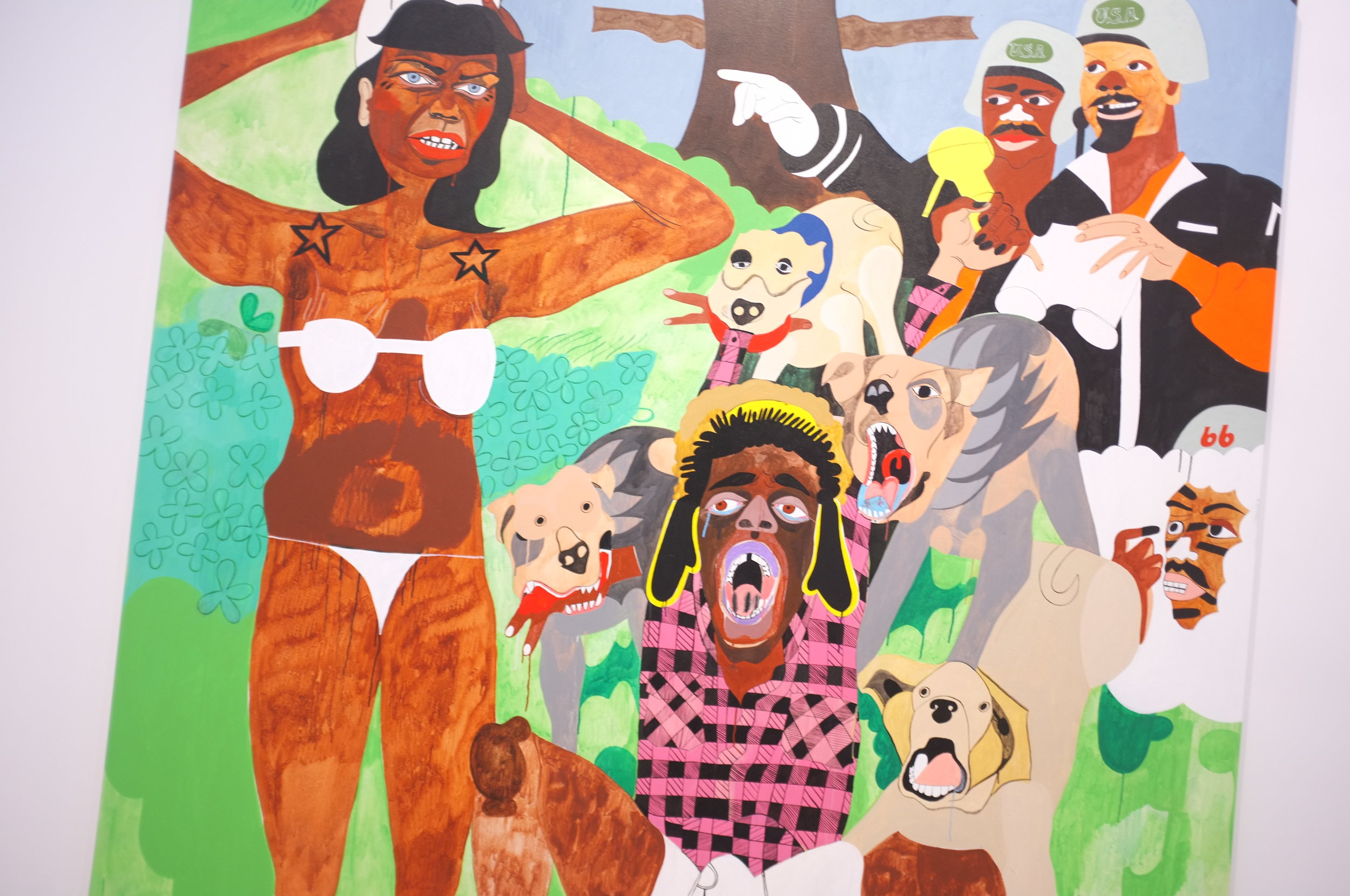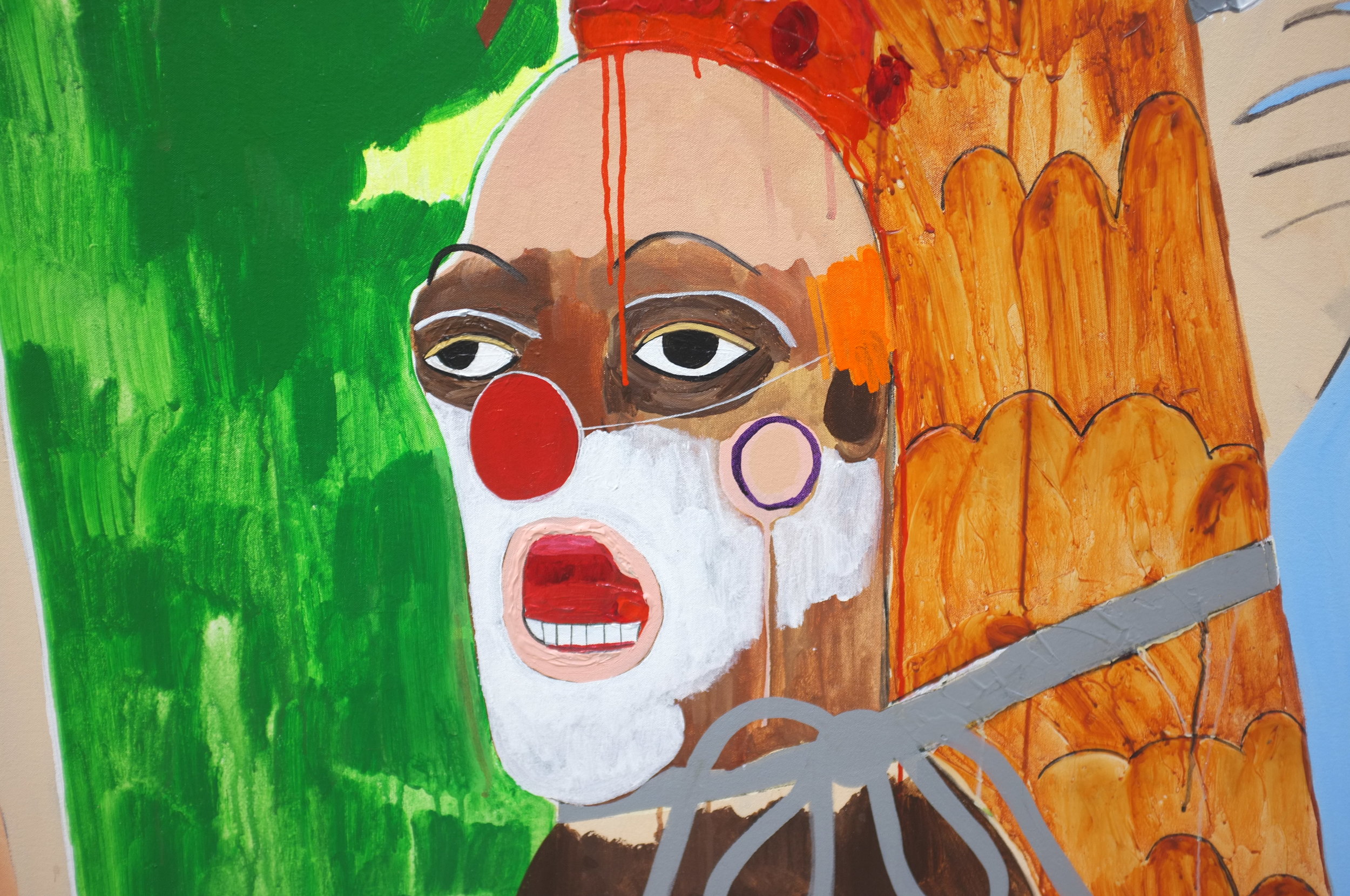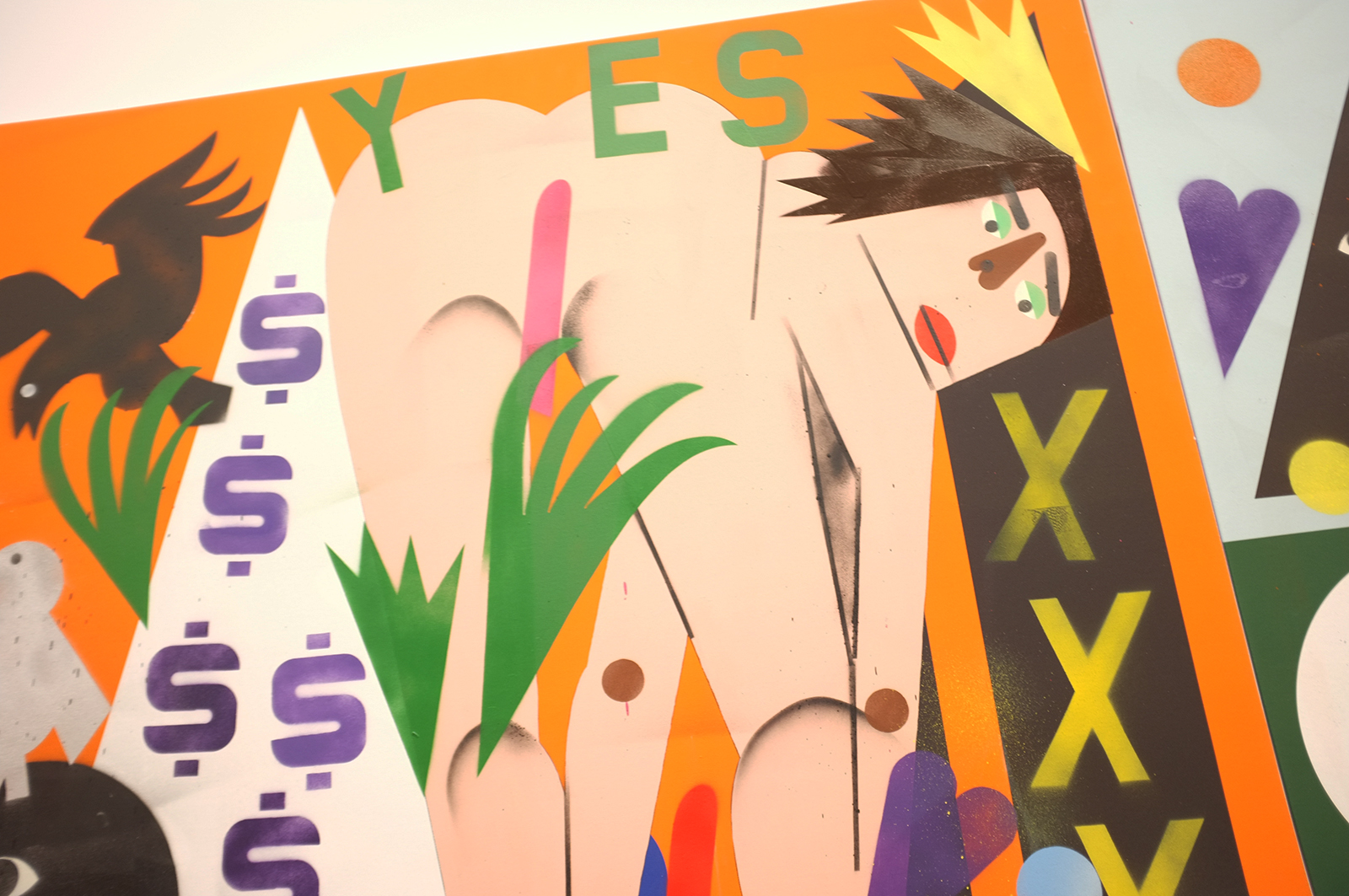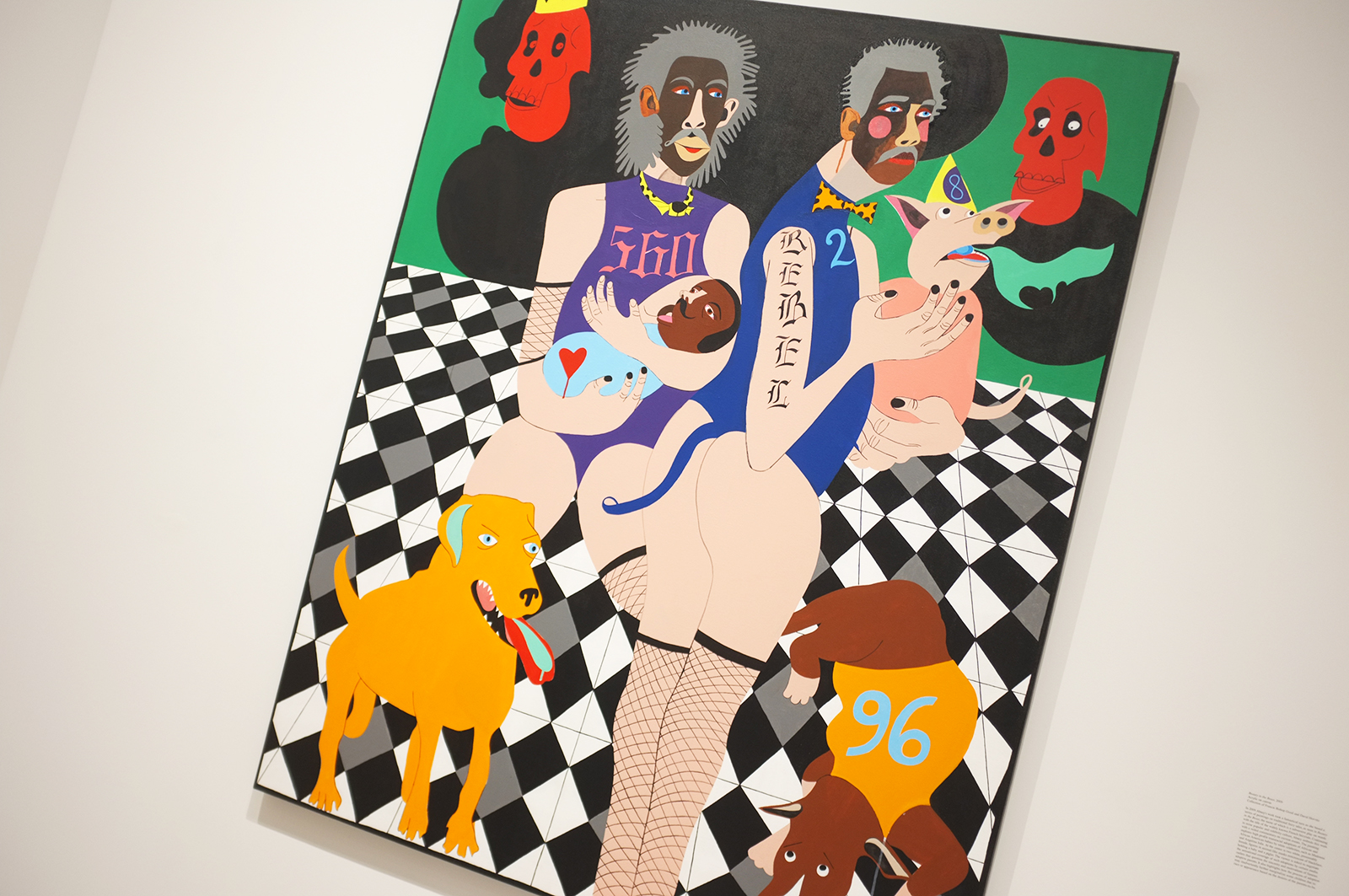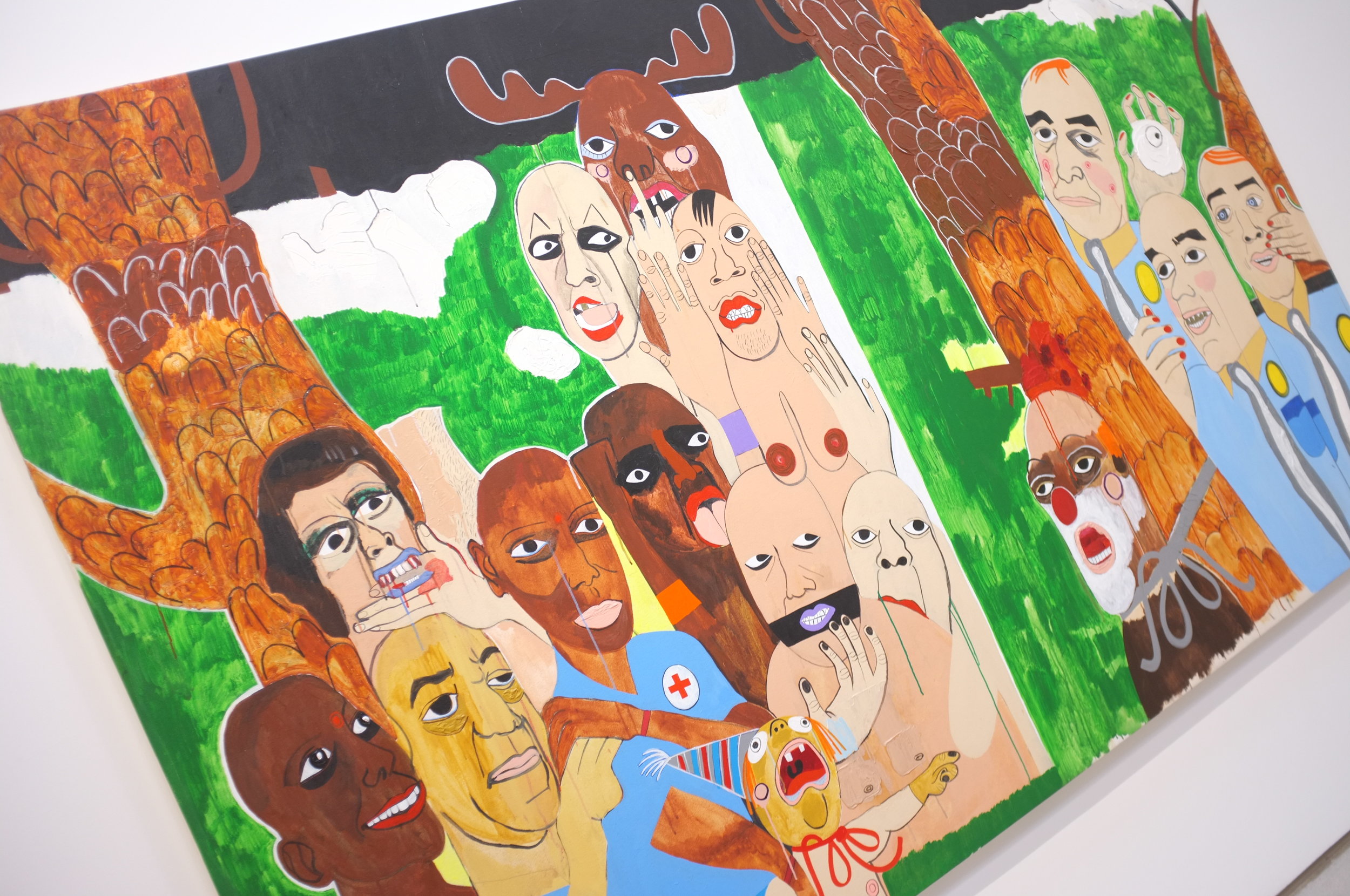San Felipe neighborhood skies
text & images by Perry Shimon
Colombia’s art scene is in the midst of a dynamic resurgence. After a prolonged lockdown that temporarily stalled the country’s cultural momentum, activity is ramping up again in anticipation of the fall season, anchored by Bogotá’s ARTBO fair, and two biennials in Bogotá and Medellín. Despite longstanding infrastructural and political challenges, the country has maintained a vibrant landscape of artist-run spaces, project-based initiatives, and strong public engagement.
In this mountain-wreathed brick city with a breathtaking theater of clouds, I had the great pleasure of seeing and meeting much of Bogotá’s cultural ecosystem. In May of this year, I attended a curatorial intensive organized by Mahazabin Haque (All About Curating, Berlin) and The Art Dome (Miami / Bogotá), which brought together artists, curators, and researchers, with warmth and conviviality, for a tightly packed itinerary of visits across studios, institutions, collections, archives, and impromptu social spaces. What emerged was a portrait of a cultural landscape with unique presence, community, improvisation, and resilience.
Telecom Building, student graduate show
One of the most memorable visits was to the dilapidated Telecom Tower—a relic of privatization now reimagined as a vertical commons. After organizing a group exhibition in the building in 2024, Linda Pongutá, William Contreras Alfonso, and Maria Leguízamo went on to occupy several floors, establishing studios, residencies, site-specific exhibitions, and performances. They also began developing an initiative to create a rotating museum showcasing works by the building’s members. During our visit, one floor hosted a student show, several artists graciously welcomed us into their studios, and independent publisher David Medina was at work on a new book project. In the elevator, the partisan resistance anthem Bella Ciao played on loop.
Gloria Sebastián Fierro Castro
Artist and teacher Ana María Montenegro gave a tour, describing a conceptual performance in which she was visiting each of Bogotá’s eighty notaries to have officially notarized a simple and rather philosophical promise: that she would be someone different tomorrow than she was today. Artist Juan Betancurth, who administers the artist residency program, gave an impromptu tour of his studio where he sculpturally assembles found objects into disquieting meditations on power, desire, and art. Nearby, Gloria Sebastián Fierro Castro showed us their haunting textile and tar works, drawn from a family archive that traces their transition from rural life to running a gas station—a stark emblem of modernization in a sepia-toned desert landscape.
Curator Nicolás Gómez Echeverri at Museo de Arte Miguel Urrutia
The archive loomed large in other ways. At the Museo de Arte Miguel Urrutia, curator Nicolás Gómez Echeverri walked us through a collection tour that will soon be dismantled and rethought under his guidance. The planned rehanging will confront the colonial scaffolding of the existing display, seeking ways to integrate Colombia’s extensive institutional holdings into a narrative that accounts for omissions and regionalism. Among the exceptional paintings of Fídolo Alfonso González Camargo, Obregón, and Cárdenas Arroyo, was a series of anonymous 18th-century convent funerary portraits: powerful images with uncertain authorship, quietly haunting and unsettling the canon.
Hadra Waheed’s Hum in Doris Salcedo’s counter-monument
At Fragmentos, artist Doris Salcedo’s “counter-monument” to Colombia’s armed conflict, we walked across a geographic-feeling topography of thirty-seven tons of hand-hammered metal tiles made from weapons turned in after the FARC peace agreement. In the adjacent courtyard, a deteriorating colonial ruin serves as the setting for Hum, a multi-channel sound installation by Canadian artist Hadra Waheed, which gathers protest songs from across the world into a reflective, almost devotional field.
Juan Cortés Studio Visit
Memory was also the subject of a project we encountered in the studio of Juan Cortés, who shared a recent collaboration initiated by the Colombian president: a digital map of “houses of memory”—community archives, cultural centers, and alternative institutions preserving regional histories. The ambitious and exemplary project is part oral history, part visual archive, part social cartography, and a model for a new possible infrastructure for collective memory.
María Adelaida Samper giving a tour of Gabriel Zea’s Mystic Capital at the Al Romero gallery
Elsewhere, in San Felipe, Gabriel Zea’s Mystic Capital, at the Al Romero House Gallery, staged capitalism as a religion. Tarot-inspired AI works illustrated symbolic systems of belief in the market, as well as its impoverished aims and overdetermined meanings. An accompanying video installation collaged cartoonish bull and bear imagery into frenetic and tumultuous booms and busts. Zea’s collective, Aliens, curated the show with María Adelaida Samper. It both estranged the givenness of our cosmologically proportioned faith in markets and situated it in a longue durée continuum of numerology, mysticism, superstition, power, and grave consequences.
Tienda de Esperanza, San Felipe
Chuco Candela in Lavamoa Tumba
Tienda culture emerged as one of the more poetic and socially alive throughlines of the trip. These ubiquitous corner stores often moonlight as salons, exhibition spaces, and places of convivial gathering. Artist Chuco Candela’s intervention at Tienda de Esperanza turned an already beloved Macarena landmark into an exhibition space for his and his friends’ often meme-themed ceramics. Later, in San Felipe, his second location hosted a massive street party with fireworks for its opening. He later invited us to visit his most recent exhibition in his ongoing Lavamoa Tumba project—enormous, sprawling group shows in condemned buildings, this edition featuring 150 artists, and overflowing with energy, humor, and street-rooted practices.
Trepesitos fashion show at Odeon
After a fashion show by Trepesitos at the majestic theater-turned-exhibition space and artful community center Odeón, we ended the night in a tienda playing bolirana, a barroom sport that fuses pre-Columbian tradition with contemporary nightlife, popular with both Reggaeton and contemporary artists. It is perhaps to bowling what ping pong is to tennis and invites loud and playful sociality. Odeón’s Tatiana Rais and Juan Sebastián Peláez, formerly of the Miami Gallery and Carne Collective, began sharing insights about Colombia’s commitment to public art funding and the system of rotating independent art professionals who administer allocations for artist projects and spaces. While there is not a strong enough local market to support the many practicing artists, this type of public funding supports the scene to some extent and underwrites less commercially oriented works.
María Morán at Cooperates
Charlie Mai exhibition and talk at Plural
We visited artist-run Cooperates studios and residency in Chapinero, anchored by the painter and teacher María Morán, and the communal Plural project—part art space, part kitchen—where Chinese-American artist Charlie Mai was showing an installation with a series of performances reflecting on Chinese capital, North/South American labor, transportation infrastructure, and hybrid identity. We were sad to miss the closing party with a durational cowboy performance, Chinese dragon dancing, and DJ set by underground club hero DJ Bclip.
José Darío Gutiérrez at Espacio El Dorado
At Espacio El Dorado, José Darío Gutiérrez gave a highlights tour of his impressive collection of overlooked political Colombian art and their marginalization through Cold War-era collecting policies imposed by major Western foundations. During our visit, a young scholar from Buenos Aires working on a curatorial project about political photographers and left-wing conferences overheard the conversation and joined our group, offering a recently published dissertation called “The Cultural Cold War in Colombia: Oil and Washington’s Policies for ‘Pacification’ of Art in Conspiratorial Times” by Christian Padilla Peñuela that Jose was coincidentally trying to place with a publisher. As we were leaving I noticed the young man and Jose in a deep thoughtful conversation, Jose generously retrieving books from his collection to give as gifts.
Taller Arte Gráfico
Subachoque
Perhaps the most moving experience of the trip was a pair of visits to Taller Arte Gráfico and Sextante, founded by Luis Ángel Parra and María Eugenia Niño fifty years ago. They welcomed us warmly to their Bogotá gallery and country atelier in Subachoque and let us marvel at the breathtaking collection amassed over a lifetime of artful collaboration. They described their printmaking and publishing practice as a ‘love story’ and shared how they met fifty years ago, moved in on that very same day, and have been together ever since. We learned a few days after our visit that sculptor Hugo Zapata—a dear friend of theirs, whose works were on display in the gallery—had passed away, making the visit a poignant and beautiful parting gift.
Subachoque
Hugo Zapata
There were countless other stops: Liz Caballero’s impressive three-story SKETCH Gallery, La Casita’s misleadingly named sprawling intergenerational and dialogic collection, Casa Hoffmann’s austere kinetic and music themed program, NC-Arte’s gorgeous design villa, Desborde Gallery’s anarchic installation and performance works by Alfonso Aguas Negras, a tour of artist duo Eduard Moreno & Andrea Marín García studio and upcoming works for the Medellín biennial, perhaps the world’s most significant pre-Columbian metalwork collection at the Oro Museum, and a very moving studio visit with the young Bogotá-born-and-raised painter Angie Vega, whose extraordinarily skillful intimate portraits of her Tunjuelito neighborhood familiars had garnered her invitations to apprentice with master painters in Europe and Saint Petersburg. The lingering impressions from this vibrant and flourishing art ecosystem were its warm hospitality, generous sociality, and a sense of experimentation that felt neither reactionary nor utopic, rather present, responsive, and open.
SKETCH Gallery
Daniela Acosta Parsons and Danilo Roa’s studio
Jeronimo Villa at La Casita
Angie Vega
Lia García in her studio
Camilo Bojaca at Galería El Museo
Miller Lagos in his studio
Studio of Andrea Marín García & Eduard Moreno
Mauricio Gallego in his studio
.
Alfonso Aguas Negras at Desborde Galería
Hugo Zapata at Sextante
Theatron
Cloud theater

